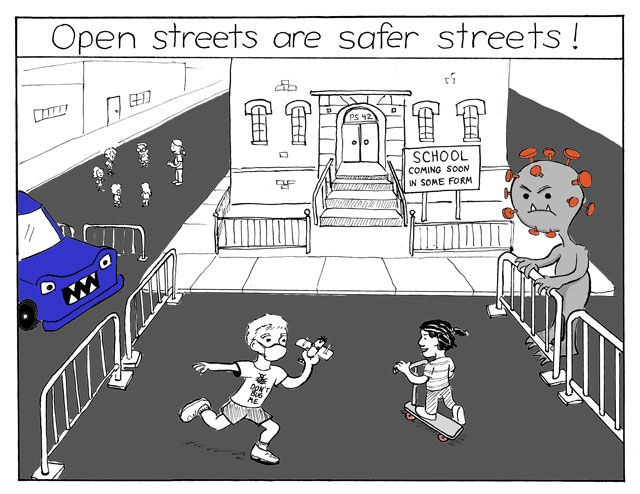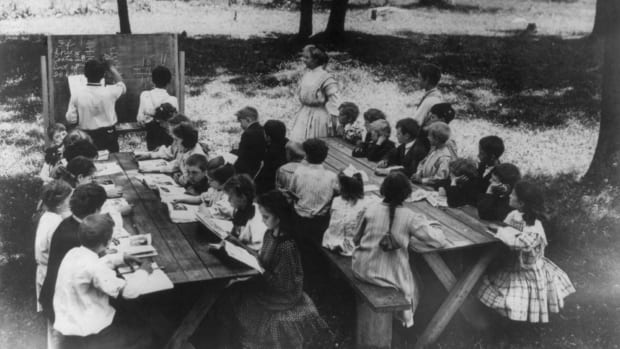New York City schools, desperate for space to conduct socially distanced, in-person learning during the coronavirus pandemic, are expanding hungrily into the surrounding streets.
Of the more than 800 schools that applied to the city’s “outdoor learning” program, 160 have asked to use streets outside of their school buildings, Department of Transportation Commissioner Polly Trottenberg told the City Council this week.
“We are expecting that number to grow,” she added.
As for how schools might use the streets, Trottenberg said, "there's going to be some trial and error. Let's learn from what works."
The Department of Education said last week that 826 schools, or about half of the city's 1,866 schools, had applied for outdoor learning and that it had approved 798 applications — so 160 would represent about a fifth of the schools asking for street space. The DOE did not return a request for comment, which is common.
Trottenberg’s announcement is the latest development in the city’s outdoor-learning program, which Mayor de Blasio unveiled late last month. The administration said it would allow schools to use playgrounds, parks, sports fields and streets, if those streets are not emergency or bus routes, in order to provide space for students for socially distanced activities, including classes, sports and lunch. The city will start in-person classes on Sept. 21 — the only large, urban school district in the nation that is able to do so at this point, given the city's now relatively low infection rate.

The need for well-ventilated space to operate schools without spreading the deadly coronavirus is, of course, of prime importance to educators, students, and parents in a city with cramped and aging school buildings. But safe-streets advocates are also keen to further the program in order to claim space near school buildings from car-drivers, who killed 10 local children in crashes in 2019, according to a Streetsblog analysis.
The program also might free up some school playgrounds that have been used by teachers as parking lots for private vehicles. An investigation recently published in Streetsblog showed that as many as one in 12 primary schools allow teachers to park in their playgrounds. Mayor de Blasio has refused to mandate that educators remove the cars from the outdoor space.
The outdoor-learning program has engendered some controversy among parents, who worry that wealthy schools will be able to afford the accoutrements needed for outdoor activities, such as tents, while poorer schools won't. In that way, the program would widen inequality among schools and communities, they contend, in demanding a dedicated funding stream. The mayor has said that wealthier parent associations should share resources with less-well-heeled ones, but he declined to dedicate any special funding to the program.
In an unrelated revelation, Trottenberg told Council Transportation Committee Chairman Ydanis Rodriguez that her department would "probably" count the school-street space toward the city’s promised 100 miles of “open streets.” The city is now 33 miles shy of that goal, according to Rodriguez, and there is no indication that the city intends to get to its promised goal of 100 miles of open streets.
Streetsblog was contacted last week by a member of the public who said DOT is no longer taking applications for new open streets.
"I suggested an open street to DOT, and they got back to me (via phone call so no recording) saying that NO additional open streets are being planned now that they're working on school open streets," the tipster said.






